 Sukhdev Sandhu
Sukhdev Sandhu
A series focusing on black British filmmakers reflects the clamor and
unrest of the ’60s to ’80s.
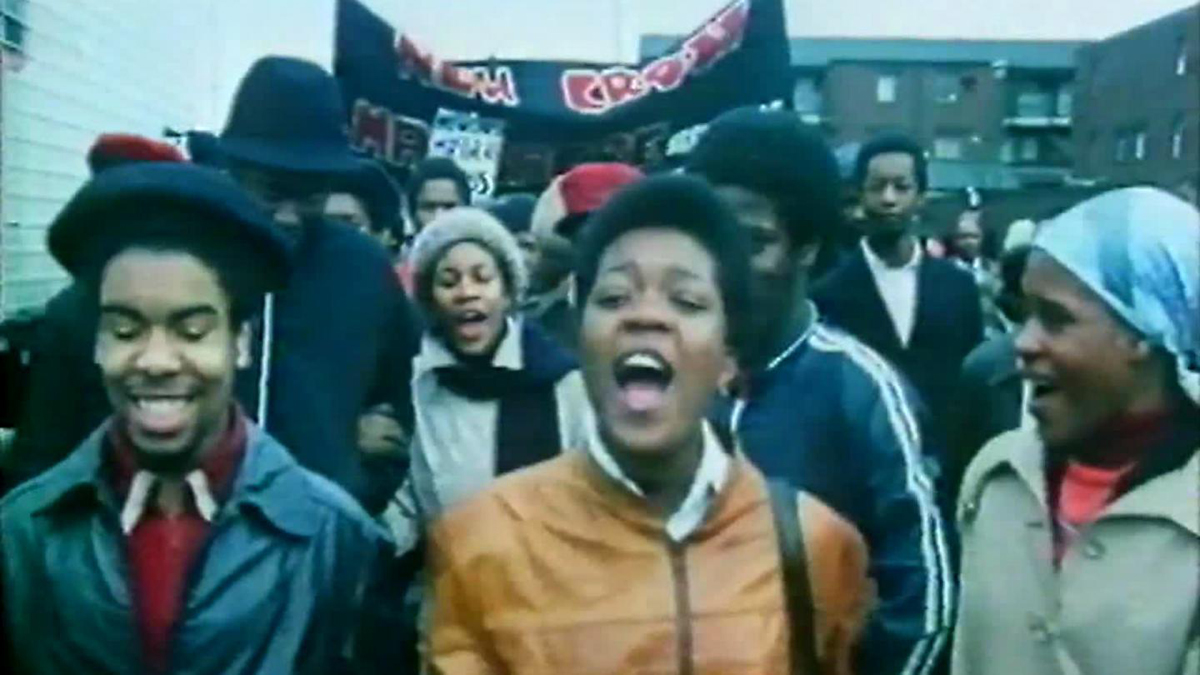
Still from Blood Ah Go Run. Courtesy the Brooklyn Academy of Music.
“Uncharted Territories: Black Britain on Film, 1963–1986,” programmed by Ashley Clark, Brooklyn Academy of Music, 30 Lafayette Avenue, Brooklyn, May 3–9, 2024
• • •
Youth in revolt. Rising sufferation. All around Babylon. “Uncharted Territories: Black Britain on Film, 1963–1986” is a ten-part program, screening at BAM ahead of a restoration of Horace Ové’s 1975 drama Pressure, that sees immigrants and their children as under duress. The postwar West Indians and West Africans heading to Blighty—what Jamaican poet Louise Bennett called “colonization in reverse”—were lusting for the shock of the new. They were wide-eyed, buoyed by pioneer spirit. But for their kids, the thrill had gone. “Uncharted Territories” is strong on retrenchment and resistance: a generation of black Britons saying no to police violence, Fleet Street scapegoating, boss-class contempt.
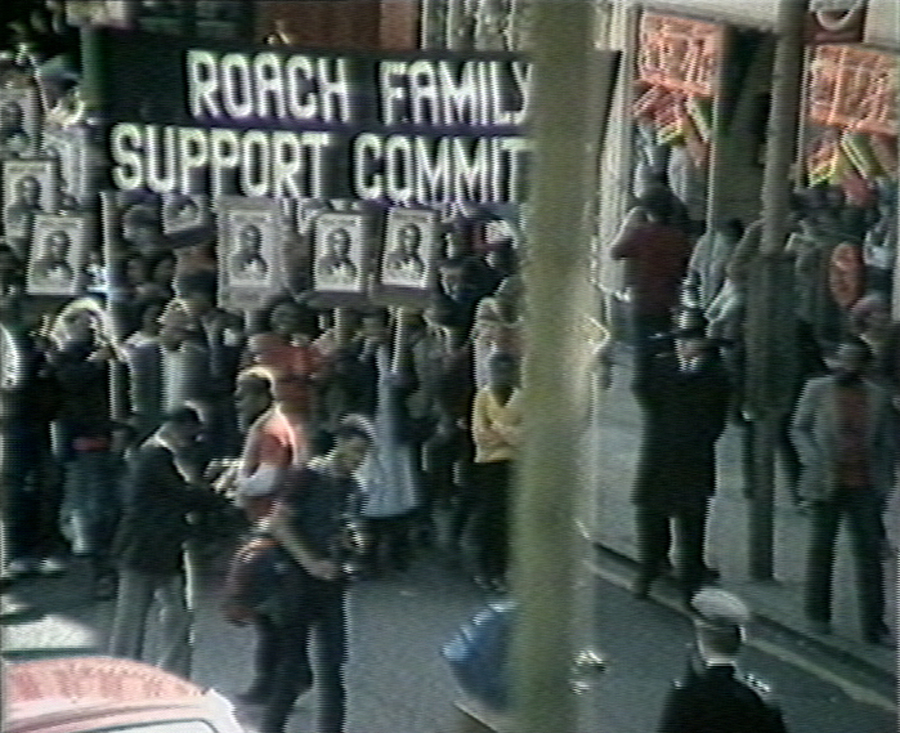
Still from Who Killed Colin Roach? Courtesy the Brooklyn Academy of Music. Photo: Isaac Julien.
This story—the focus of bristling films such as Menelik Shabazz’s Blood Ah Go Run (1981), Isaac Julien’s Who Killed Colin Roach? (1983), and Milton Bryan’s The People’s Account (1986)—has, at least until recently (in Steve McQueen’s landmark 2020 anthology Small Axe, for example), not been told very often. Yet among these lesser-known titles, there are even deeper cuts that stand out. For decades, Death May Be Your Santa Claus (1969) was an unholy grail for devotees of underground cinema. It’s the sole directorial effort by Frankie Dymon, who was born in St. Lucia, cropped up in Jean-Luc Godard’s One Plus One / Sympathy for the Devil (1968), and was said to be a member of the British Black Power movement (more of a corpuscle, truth be told).
Death May Be has often been described as the only British Black Power film. This suggests a coherence that, for good or bad, it completely lacks. It’s preening and earnest, erratically acted and shot, keen to alarm—a torrid stew. None of this is necessarily a criticism. Ken Gajadhar plays Raymond, a black lecturer in a tangerine roll-neck and yellow underpants who sleeps under a poster of Che Guevara. He seems quite taken with an unnamed, blue-caped white woman (Donnah Dolce), with whom he makes extended and accomplished love scored to a soundtrack of increasingly manic synths, at the end of which she has turned black.
That’s one of the film’s calmer scenes. At other times, a Pope wanders around London as an itinerant preacher. A chap in traditional Chinese clobber recites political tracts to uninterested bystanders. A bunch of wild-haired, body-painted freaks jam in a ratty apartment. A black man gets thrown in a lake and nearly drowned by a pair of grinning no-marks, only to climb out and join them as they attack a white man in a nearby garden, castrating him and then gobbling his penis.
Dymon wants to say something, but he doesn’t know what or how to. Maybe he’d been turned on by the cover of Electric Ladyland. Maybe he’d read Black Skin, White Masks—or had heard Eldridge Cleaver prattle on about how the rape of white women was “insurrectionary.” He’d likely heard about the rise in attacks on black Britons after Conservative politician Enoch Powell’s notorious “Rivers of Blood” speech. We will probably never know. He recorded the vocals for Let It Out, a 1971 psychedelic krautrock LP by a band named Frankie Dymon Jr., and then disappeared. All that’s left is this muddled mess that channels, vividly and haphazardly, muddled, messy times.
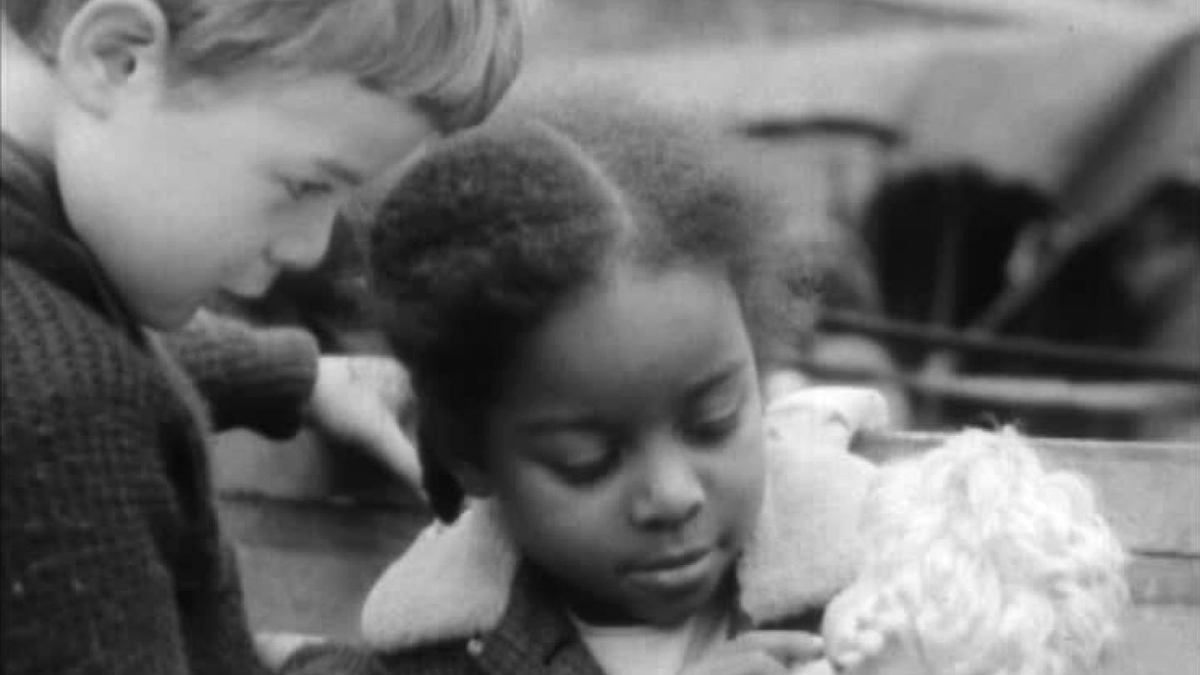
Patrick Hatfield as Johnny and Nicolette Robinson as Jemima in Jemima and Johnny. Courtesy BFI.
Very different is Jemima and Johnny (1966), by South African Lionel Ngakane, an exiled ANC member who appeared in the BBC sci-fi serial Quatermass and the Pit (1958) and was later a founding member of the Pan African Federation of Filmmakers. Jemima (Nicolette Robinson) and Johnny (Patrick Hatfield) are barely five. She is black; he is white, his father a regular at local fascist rallies. They play together; skip across a pre-gentrified Notting Hill, whose streets are cratered and war-rubbled; stare at big towers being built.
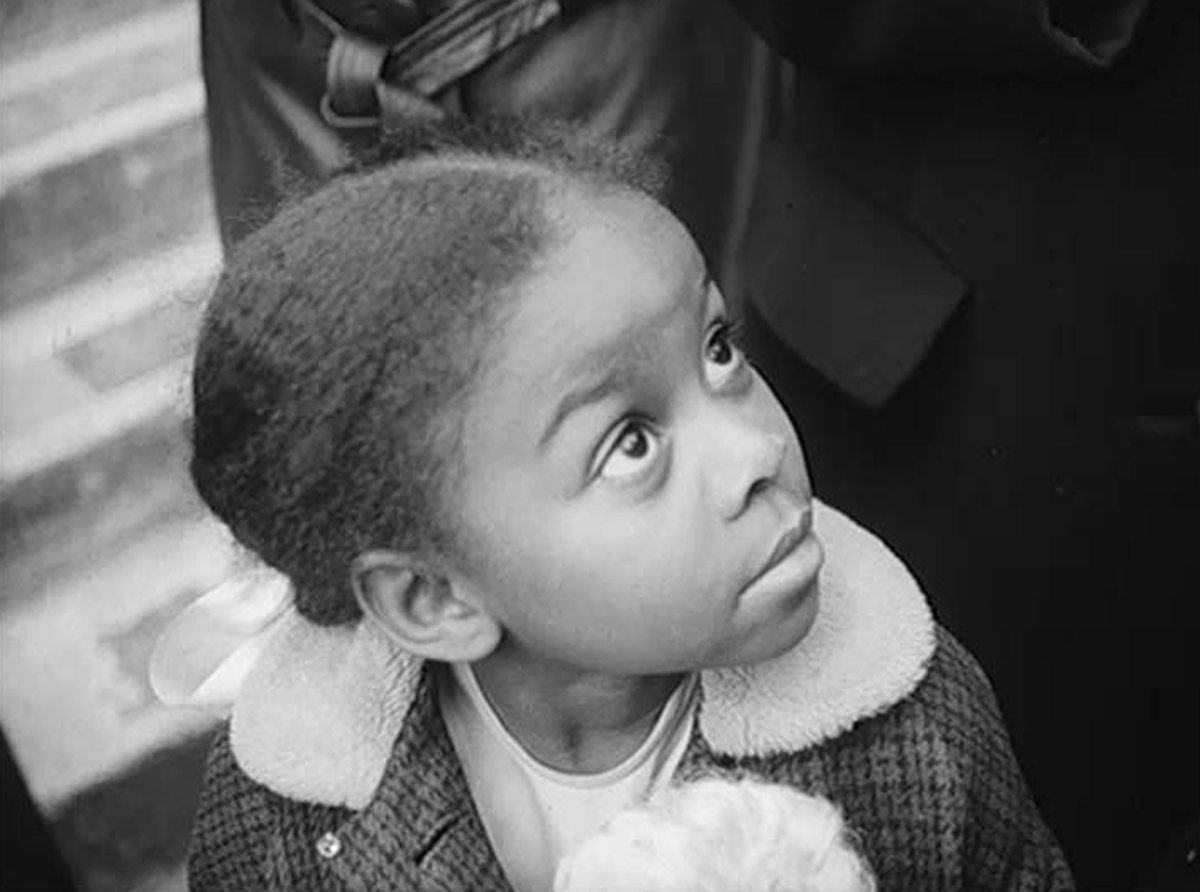
Nicolette Robinson as Jemima in Jemima and Johnny. Courtesy BFI.
The pair are kindergarten flaneurs who poke and prod at this junkyard city, kick around a coconut, bury a dead pigeon. They’re alive to a place that rabble-rousing politicians see as dead. Their parents report them to the police as missing, but it’s through their wanderings, their open gazes and curiosity, that a newer, convivial London emerges. Ngakane’s own deep knowledge of the neighborhood, where he ran a bric-a-brac stall, plus Brian Probyn’s photography, which recalls the heady ambience of Free Cinema directors such as Karel Reisz and Lorenza Mazzetti (to say nothing of a superb folk-jazz score by the ill-fated Bill Bramwell), contribute to this quiet revelation.
In 1990, a senior Conservative politician named Norman Tebbit (so charming that he was monikered, in reference to his home constituency, as the “Chingford Strangler”) declared he was disturbed by the cricketing loyalties of immigrants from the former British Empire. Too often, he claimed, they rooted not for England, but for India, Pakistan, the West Indies: “Which side do they cheer for? It’s an interesting test. Are you still harking back to where you came from or where you are?” Tebbit’s question was part of a general anxiety about blackness and cricket throughout the 1970s and 1980s: Caribbean fast bowlers were criticized for being too fast, their diasporic fans chided for being too rowdy.

Still from Playing Away. Courtesy Park Circus.
Director Ové and screenwriter Caryl Phillips (better known for his historical fiction) know that cricket has always been a social code as much as a sport. That insight underpins Playing Away (1986), their pleasingly understated comic drama about a team of squabbling, sometimes feckless black Londoners who travel to the fictional village of Sneddington—think Midsomer Murders or Miss Marple territory—to play a charity game in aid of “Third World Week.” Some version of pastoral they encounter: the women, far from impressed by the local oiks, are lonely and looking for action; the older gents thirst for someone with whom they can share their Raj-era memories.
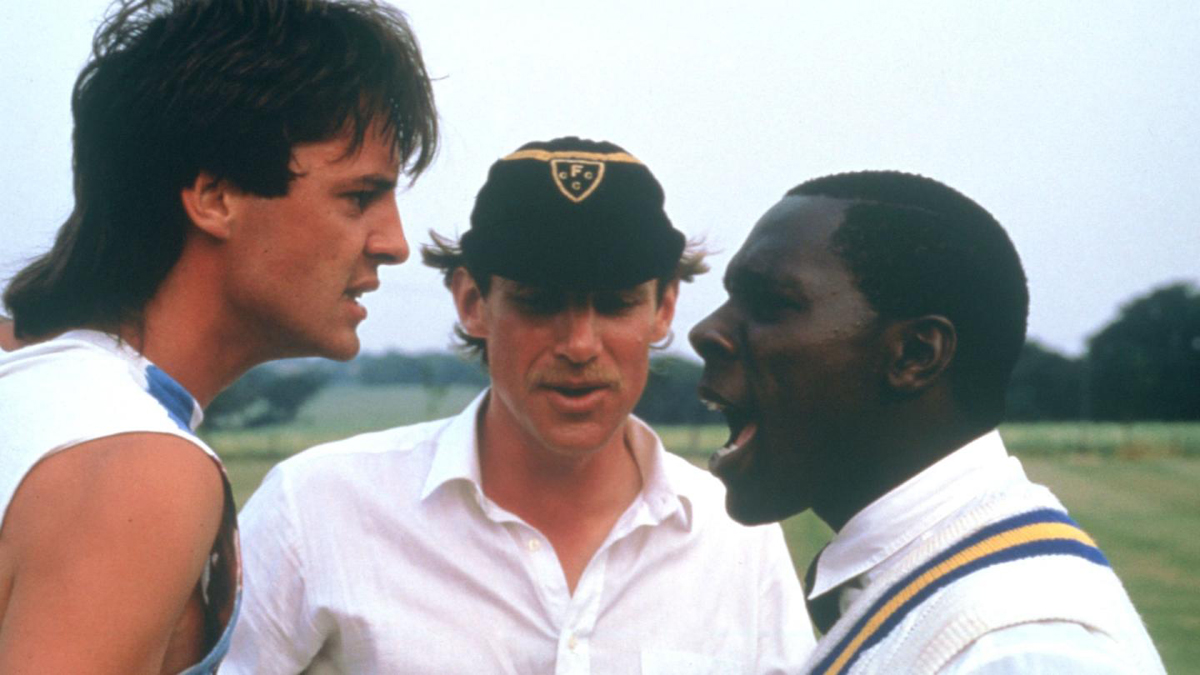
Still from Playing Away. Courtesy Park Circus.
Sneddington turns out to be less a fortress of Englishness than a wan, slightly enfeebled hothouse of postcolonial melancholia. What makes Ové’s film so sharp, so wise, is how ruefully it portrays the visiting cricketers. Lead character Willie-Boy (much-missed actor Norman Beaton) is separated from his partner and stressed about his daughter. His teammate Robbo (Joseph Marcell) sighs, “I was twenty-three when I came to get hold of the future. Now I’m nearly fifty.”
Here is something new, a still mostly untapped seam of sensibility. Gray Britain. A Britain in which both black and white people are aging in place, united by a loss that can barely speak its name. Both have their blues. V less for Victory than for Vulnerability.
Sukhdev Sandhu directs the Colloquium for Unpopular Culture at New York University. A former Critic of the Year at the British Press Awards, he writes for the Guardian, makes radio documentaries for the BBC, and runs the Texte and Töne publishing imprint.